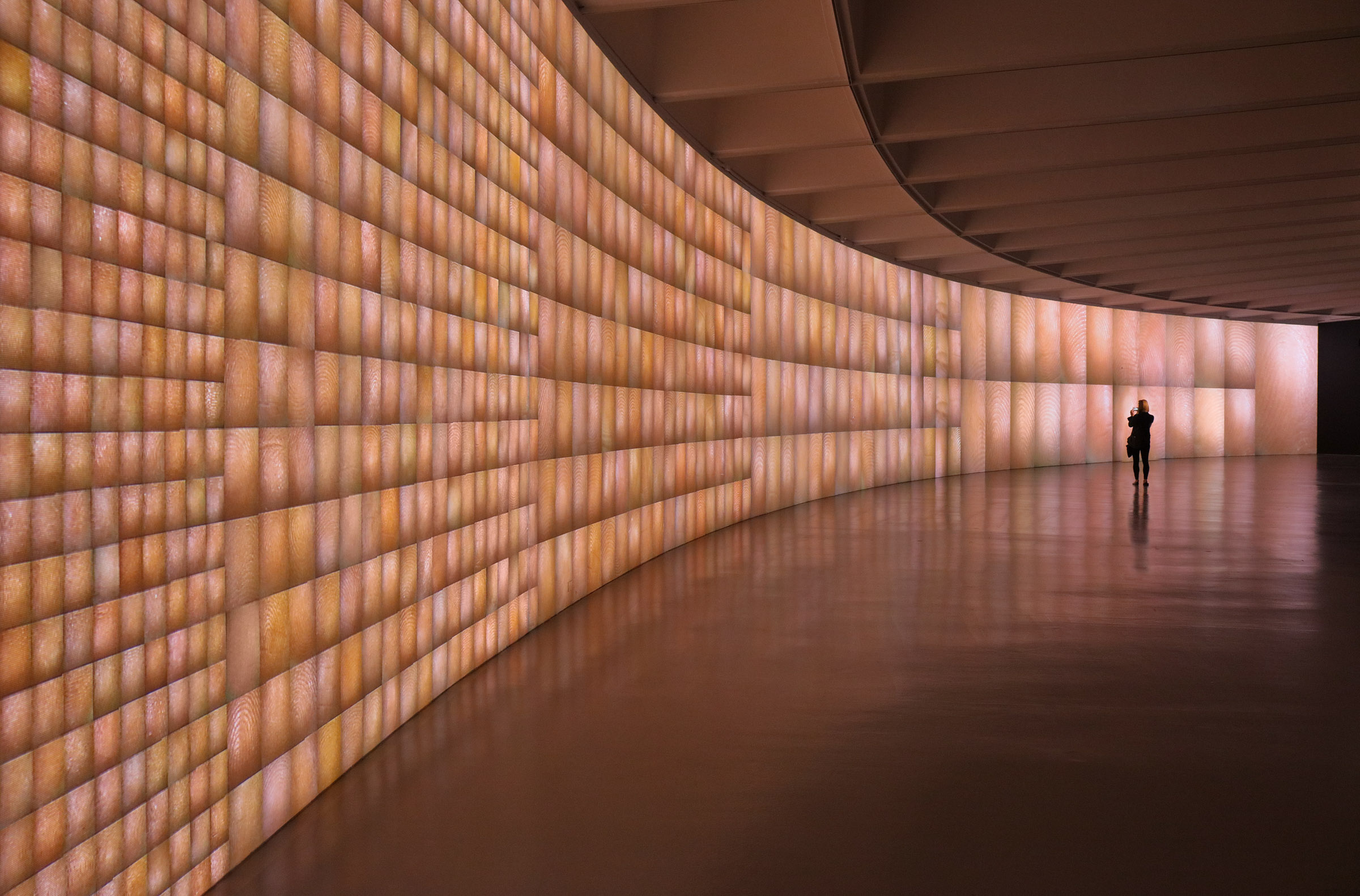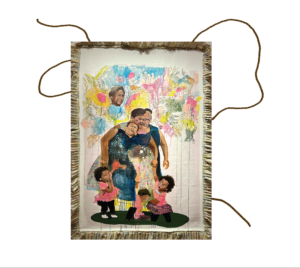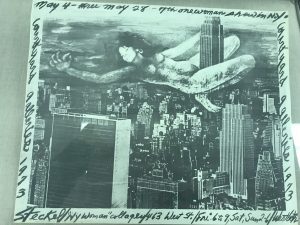For Mexican-Canadian artist Rafael Lozano-Hemmer, the human heartbeat fulfills its poetic potential best when heard as one among many. Lozano-Hemmer’s introduction to his newest exhibit at the Hirshhorn Museum, Pulse, explains his desire to establish a platform for participation, in which the sum of heartbeats can “create unforeseen biometric landscape beyond the symbolism or medical importance of a single heartbeat.”
Pulse, on display through April 2019, is a three-part series on the second floor of the Hirshhorn. It is also the museum’s largest interactive technology exhibit yet. Visitors are able to translate their own biometric data (heartbeats and fingerprints) into audio and visual displays, demonstrating Lozano-Hemmer’s common theme of merging art with technology.
The first installation—Pulse Index—is composed of a grid of thousands of projections that feature the enlarged fingerprints of visitors. There is something deeply fascinating, yet profoundly disturbing about the seemingly endless panels of magnified index fingers plastered along the curvature of the Hirshhorn’s circular wall. The content of the human data is incredibly personal, but its presentation before the visitor is jarringly foreign; one is confronted with the incredible power of the security state in the digital age and its broader potential for both helpful and sinister purposes. Luckily, all of the visitor data is systematically wiped out of the exhibit’s database.
Pulse Tank, the second installation, can be heard before entering its darkened space. Sensors that measure the pulses of visitors transform their heartbeats into ripples on a shallow water tank. The resulting ripples are reflected onto the walls, creating illuminated shadows that move amidst a disparate, but harmonious chorus of magnified heartbeats. The process by which Lozano-Hemmer translates heartbeats from their initial pulse to a glimmery and transcendent shadow is truly innovative. Even through all these different mediums, the importance, familiarity, and movement of that sound is never lost. This method of translation also reinforces the universality of the original beat and its shared significance.
The last room in the Pulse series is arguably the most dramatic. Aptly titled Pulse Room, the otherwise empty hallway is filled with hundreds of hanging light bulbs. A single sensor placed at the end of the space transmits one visitor’s pulse to the first light bulb and eventually to all the others. The ensemble of flashing bulbs, as outlined in Lozano-Hemmer’s exhibit introduction, is inspired by the film Macario (1960) in which the character encounters Death’s dark cavern and thousands of candles—each one representing a life.
Lozano-Hemmer and the staff at the Hirshorn have demonstrated a masterful use of the museum’s space. The rooms flow together as a seamless progression of three very distinct, yet conceptually cohesive installations. While the participatory element of Pulse drives home Lozano-Hemmer’s commentary on the use of biometric data, one can’t help but wonder if the exhibit’s core focus is diluted amongst the clamor of an enthusiastic public to measure and admire its data, primarily for visual satisfaction.
Pulse is certainly entertaining to interact with and observe, but its emphasis on the compilation of human data in history and modern culture is its most intriguing feature. In his introduction, Lozano-Hemmer argues that biometric data should be used as a unifying force, where the compilation of individual traits can flourish.
“At a time when we are seeing ethnic nationalism on the rise, dividing people along simplistic categorizations, it is critical to misuse these mechanisms of control to create connective, anonymous landscapes of belonging,” Lozano-Hemmer writes.
The significance of this message could not be more appropriate, particularly in this period of walls and borders. It is crucial to remember the underlying characteristics that bind us together, regardless of race or nationality, into a single and powerful collective.






[…] Pulse is a Clever Expression of Biometric Data For Mexican-Canadian artist Rafael Lozano-Hemmer, the human heartbeat fulfills its poetic potential best when heard as one among many. Lozano-Hemmer’s introduction to his newest exhibit at the Hirshhorn Museum, Pulse, explains his desire to establish a platform for participation, in which the sum of heartbeats can “create unforeseen biometric landscape beyond the symbolism or medical importance of a single heartbeat.” Pulse, on display through April 2019, is a three-part series on the second floor of the Hirshhorn… Visitors are able to translate their own biometric data (heartbeats and fingerprints) into audio and visual displays, demonstrating Lozano-Hemmer’s common theme of merging art with technology. The Georgetown Voice, January 18, 2019 […]